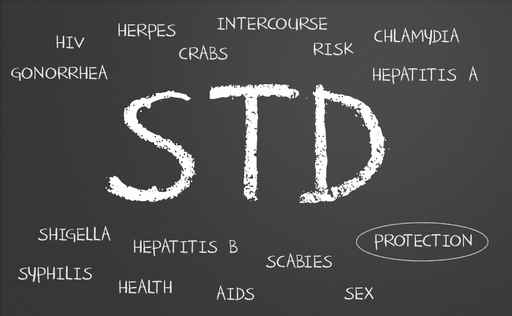Women’s Guide to Sexual Health
Make no mistake: Safe sex is as important now as it was 25 years ago.
The CDC has raised the alarm: Young people especially aren’t practicing safe sex as they should, and cases of chlamydia, gonorrhea, and HIV among the under-25s are substantially higher than figures for the rest of the population.

STD symptoms aren’t always obvious: In many cases, no symptoms manifest themselves at all, which is what makes identifying and treating those with STDs so hard. Therefore, it’s a good idea to visit your doctor or local testing center on a regular basis for STD screening – even if you’ve only had one or two partners in the last five years.
Treatment for STDs varies. Some can be dealt with quickly and easily, while for others, the treatment may take longer.
It’s also vital that any partners are informed of an STD so they too can get tested, and, if necessary, treated.
Untreated STDs don’t only mean infecting any partners. By putting extra pressure on the immune system, they also increase the risk of acquiring another STD, including HIV, as well as diseases such as cancer and heart disease. In many cases, they can lead to pelvic inflammatory disease (PID), which in turn often causes infertility and dangerous ectopic pregnancies.
How to avoid STDs
Condoms are a very effective method of reducing the transmission of STDs, as well as unwanted pregnancies – so use them!
During the AIDs epidemic of the ’80s, condom usage increased, but to young people today, most sexually transmitted diseases (STDs) – even HIV – are regarded as curable or manageable rather than possible killers. However, if left untreated, even something as apparently insignificant as a trich infection can lead to permanent damage to the uterus and fallopian tubes.
Some of the most common STDs in women
Chlamydia, a bacterial infection of the genital tract, is the most frequently reported STD in the US, according to the CDC; despite this, most cases continue to do undiagnosed.
Symptoms generally occur between one and three weeks after initial exposure, but as they are neither severe nor enduring, many sufferers overlook them.
Chlamydia is treated easily with antibiotics; a weekly dose is generally enough.
Chlamydia is not something to ignore, as the consequences are more serious than many women realize. If left untreated, Chlamydia leads to PID in about 40 percent of all cases.
Gonorrhea is the second most common STD in the US. The symptoms – if there are any at all – are often confused with a bladder infection. Gonorrhea is treatable with antibiotics but while these stop the infection, they cannot help fix any permanent damage that may have been caused.
Genital Herpes has no cure, and although symptoms come and go, the virus will stay in your body permanently. Drugs can help shorten and alleviate the attacks, however.
Human Papillomavirus (HPV) is a very common virus of which there are about 100 strains; of these, some can cause genital warts and a small amount are linked to cervical cancer. This is why routine Pap test screening for cervical cancer, as well as the new vaccine to prevent HPV infection in girls and women aged 9 to 26 years, are both strongly advised.
Trichomoniasis (trich) is caused by a parasite that can be passed during sexual contact. Symptoms include strong-smelling vaginal discharge and an irritation in the genital region.
Even today, about 21 percent of US residents with HIV have not been diagnosed. HIV can progress to AIDS, for which there continues to be no known cure, though medication is now available to slow the disease’s progress. The estimated number of cases of AIDs in women has increased significantly since 1999.
Where to get checked out
Anyone who has experienced one or more of the following symptoms: Strong-smelling or abnormal vaginal discharge, pain in the lower abdominal region and a burning sensation when urinating, should get themselves checked for STDs.
STD testing centers are based all around the US. Find out where your local centers are located and go and get yourself checked, even if you’re not experiencing any symptoms. These places will treat you completely anonymously and without judgment.



